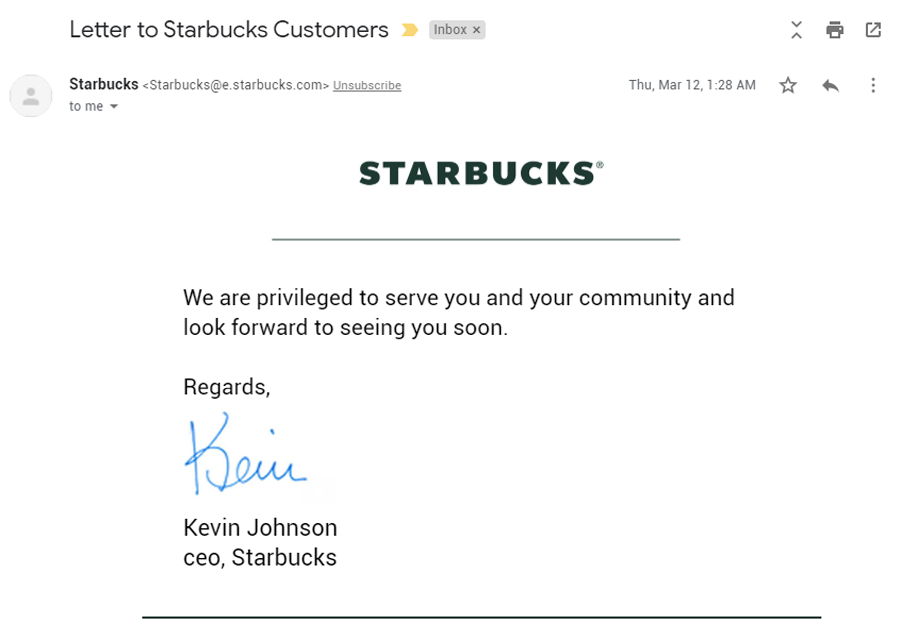This post is part of TBH Creative’s series on digital marketing, crisis communications, and COVID-19.
Email messaging is a critical piece of any crisis communications strategy. Your contact list has willingly signed up to hear your latest news, giving you a direct line into their inboxes.
According to recent benchmarks, in many industries about 25% of emails sent from businesses to their subscribers will be opened. Compared to engagement from other types of marketing (e.g., .08% engagement on Facebook for retail posts and 1.91% CTR on Google PPC ads), email’s reach is significant, making it all the more important to get it right, especially during a crisis.
Read on for do’s and don’ts for effective email messaging as part of your overall crisis communication plan.
✔️ Do: Think about your audience
Whether you plan to send an email message to your whole database or include different messaging for specific segments, your email audience should be a top consideration in a crisis communication strategy. Examples of audience criteria to look at might include:
- Last activity date
- Subscription type
- How the user will be impacted by the crisis
When to send a crisis email to your entire email list:
- In the event of a data breach that impacts all of your users in the same way
- If all clients or patients will be impacted by universal changes in your services or products, such as adjusted hours at a clinic, storefront closures, or delivery delays
- If you have news, insights, or other special offerings helpful for all users
When to segment your crisis email list:
- If changes will only affect some users, send only to those for whom the information is relevant
- Consider active vs. inactive contacts, based on recent activity date. These contacts likely have different levels of concern about how your company is responding to the crisis and may require different messaging.
✔️ Do: Be authentic
Maintain your brand voice in your email messaging, even during crisis. While it is important to acknowledge any serious situation with appropriate solemnity, your contacts are on your list for a reason.
If it is appropriate, sending an email from your company leader addressing what is happening and what your users can expect moving forward will help you build trust and community.
Take Starbucks, for example. Their marketing team sent active customers a simple-yet-effective letter from the CEO of Starbucks at the start of the COVID-19 crisis.

✔️ Do: Make your emails actionable
Whether the situation is a crisis affecting everyone or something specific to your company, think about how you can use your emails to get your customers up to speed and understand what’s expected from them.
Here are some examples:
- Have you changed how you handle appointments? Have you canceled upcoming appointments indefinitely or set up temporary offices? Inform your customers of any new information and include what is expected of them, if anything (e.g., if switching from in-person to virtual meetings, let them know how to install and test software for their computer or device)
- Will shipping be delayed? Give your customers a way to stay on top of their deliveries by providing tracking numbers
- Has your service stopped temporarily? Help your customers lock down their account for safety
- Can they take steps to make their account more secure or place payments on hold until regular service resumes? Provide quick links and instructions for updating account information within your system
Everyone likes to be in the know. As you map out your crisis communication plan, use your emails as a tool to help your customers know what’s going on and what’s coming next.
❌ Don’t: Leave automated emails on autopilot
One of the benefits of email marketing is that the messaging can be managed in near real-time, including adjusting or pausing planned emails. Be sure to review upcoming marketing emails, as well as any user-triggered, drip campaigns that might need to be paused or updated until things return to normal.
If your marketing team is busy managing crisis communications and they don’t have the capacity to review and adjust all of your automated emails, consider setting a temporary, blanket pause.
Imagine this scenario—
An extensive data breach compromises all of your users’ credit card information vulnerable to hackers. Your IT team sends an email message to all users to let them know what happened and recommend they change their passwords. Then, the next day, a scheduled campaign email blast hits your users’ inboxes that encourages them to sign up for a new service and enter their credit card info to get started. Not the best timing!
❌ Don’t: Spam your customers
Things can change quickly in a crisis situation. Though it may be tempting to push out an email blast with each new update or change, sending too many communications can be overwhelming for your customers. Information overload is real. If you overshare, you might drive some customers to unsubscribe—or worse, mark your email as spam. Here are some recommendations:
- If the situation is ongoing, consider creating different list segments to allow users to set the frequency of how many crisis communications updates they receive
- Be strategic with each email message. Determine its purpose and goal. If a message doesn’t fit the bill, reconsider pressing send.
- Keep your word! If users opt-out of your email list, do not continue to email them. If you are not respectful of their request, you run the risk of having your future communications flagged as spam.
Pro-tip: Sending spam to non-subscribers isn’t just a poor email practice, it’s actually illegal. Don’t do it.
✔️ Do: Analyze your data
Take the time to learn from the results of your email sends during a crisis. Review list segmentation data, open rates, click-through rates, submissions, and even ROI from these targeted emails.
Often, in times of crisis, your email messaging goes out to just about all contacts labeled as active in your database, and this greater reach might create an opportunity to do some data clean up. Look at your data and clear out contacts who unsubscribed from all messaging or those with email addresses that get a hard bounce.
Review to see if specific email subject lines resonated more with your audience and determine if there were patterns for emails sent at certain times/days that you may incorporate in future email marketing. Basically, do the same sort of analysis you would do for a typical email marketing campaign.

When it comes to crisis communication planning, emails are an essential part of your strategy when used appropriately. No marketing professional has come up with a universally perfect magic formula that works across all industries, so be thoughtful and do what’s right for your company. Stick to your brand, be helpful to your customers, and take time to learn from your email marketing’s performance during a time of crisis.

